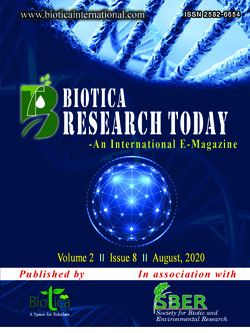
Regenerative Agriculture: Future of Sustainable Food Production
Gayatri Sahu*
Dept. of Soil Science & Agricultural Chemistry, Institute of Agricultural Sciences, Siksha ‘O’ Anusandhan (Deemed to be University), Bhubaneswar, Odisha (751 030), India
Shreya Das
Dept. of Agricultural Chemistry & Soil Science, Bidhan Chandra Krishi Viswavidyalaya, Mohanpur, Nadia, West Bengal (741 252), India
DOI: NIL
Keywords: Carbon sequestration, Regenerative agriculture, Soil health, Sustainability
Abstract
The loss of the world’s fertile soil and biodiversity, along with the loss of indigenous seeds and knowledge, pose a mortal threat to our future survival. According to soil scientists, if current rates of soil destruction (i.e. decarbonization, erosion, desertification, chemical pollution) occurs continuously, then we will not only suffer serious damage to public health due to a qualitatively degraded food supply characterized by diminished nutrition but also we will literally no longer have enough arable topsoil to feed ourselves within 50 years. Without protecting and regenerating the soil, it will be impossible to feed the world. Thus, adoption of regenerative agriculture should be done to regenerate and revitalize the soil and the environment. Regenerative agriculture leads to healthy soil, capable of producing high quality, nutrient dense food while simultaneously improving, rather than degrading land, and ultimately leading to productive farms and healthy communities and economies.
Downloads
not found
Reference
Seru, S., Mitchell, L., 2020. Regenerative Is the New Sustainable in Agriculture. Retrieved from https://www.brinknews.com/regenerative-is-the-new-sustainable-in-agriculture.
Ranganathan, J., Waite, R., Searchinger, T., Zionts, J, 2020. Regenerative Agriculture: Good for Soil Health, but Limited Potential to Mitigate Climate Change. Retrieved from https://www.wri.org/blog/2020/05/regenerative-agriculture-climate-change.
Charles, A. F., Richard, R. H., James, F. P., 2009. The potential for regenerative agriculture in the developing world. American Journal of Alternative Agriculture 1(2), 65-74.
